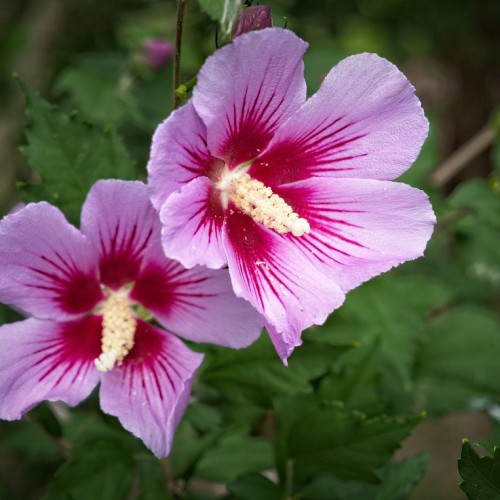
rose of Sharon
Hibiscus syriacus
Also Known As - rose of SharonCycle:
Perennial
Watering:
Average
Hardiness Zone:
5 - 8
Flowers:
Flowers
Sun:
Full sun,part shade
Soil:
Humus rich, Well-drained
Fruits:
Fruits In Autumn Ready In Fall
Edible:
Yes
Leaf:
Yes
Growth Rate:
Moderate
Maintenance:
Low
Drought Tolerant:
Yes
Invasive:
Yes
watering
Rose of Sharon should be watered when the top inch of soil is dry. During the growing season, it should be watered deeply about once a week, providing 1 to 2 inches of water. If the plant shows signs of wilting, then it should be watered more frequently. During the winter months, it should be watered less frequently instead of only when it begins to wilt. The plant should not be allowed to dry out completely; it needs some moisture in the soil at all times.
sunlight
Rose of Sharon (Hibiscus syriacus) thrive best in locations that get full sun for 6-8 hours per day. Even though these plants tolerate partial shade, they do not perform as well. If you can find a spot in your garden that receives full sun throughout the day, it will be beneficial for the growth of your Rose of Sharon. It’s never recommended to plant them in full shade, unless you are living in a very warm and sunny region in which case it can tolerate 4-6 hours of direct sun.
pruning
Rose of Sharon should be pruned in late winter or early spring before new growth begins. Prune to shape the shrub, to remove any dead wood, and to reduce the height and width. Established shrubs require light pruning every year. Its best to prune out old wood to stimulate new growth of flowers and stems. Make sure to thin out the interior of the shrub to allow for good light and air circulation. Reduce the height of overly tall shrubs by up to 1-third at a time, cutting the top third back to just above an outward-facing catch branch. Prune sides of the shrub to a vase shape.
